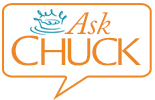
Dear Chuck,
I am 28 years old and in my first professional position in IT. I am trying to figure out how to make use of our company’s 401(k) plan. Right now I can only afford to contribute $100/month.
Struggling to Save

Dear Struggling to Save,
Congratulations that you are already thinking about long-term savings this early in your career! Maximizing the use of a company 401(k) plan is a very wise decision that has many advantages. Let’s get into some details that will help you gain the highest benefit.
History
The term for this account comes from the section of the Internal Revenue Code that was added in 1978, which allowed for “pre-tax” contributions directly from employee paychecks to be matched by funds from the employer. Intended at the time to help those receiving large bonuses or shares of stock in their compensation plan, the 401(k) has since become the dominant source of retirement savings for most Americans. Today, more than six trillion dollars are estimated to be held in these accounts by more than 80 million workers.
Employees receive two significant benefits from 401(k) plans and other tax-exempt retirement accounts: first, there is the obvious tax benefit. Second, employees have a way to protect their retirement savings from losing real purchasing power through inflation. On the downside, 401(k) plans are riskier for employees as the market rises and falls. Active management of these funds is provided by a third-party administrator.
Biblical motivation
Throughout the Bible, we find examples that highlight the importance of saving. Joseph instructed Pharoah to save during the good years to be prepared for a prolonged famine. Ants are pointed out as examples that gather food during harvest to be prepared for the coming winter. The motivation is not to get rich but rather to show wisdom through constraint and preparation for an unknown future.
“The wise man saves for the future, but the foolish man spends whatever he gets” (Proverbs 21:20 TLB).
First things first
Often, young people get involved in a long-term savings program by making deposits in tax-exempt accounts but neglect to establish an emergency fund first. The sting comes when an emergency happens and funds are needed, but they are not available without a penalty for early withdrawal or significant interest required on a loan from those accounts.
Before you maximize your long-term savings, be sure you have or are simultaneously building your emergency fund. This money is kept in an interest-bearing account, such as a money market account, that can be accessed immediately without penalty. I suggest you have at least one month of your current salary set aside in this fund before contributing to your 401(k). If you are earning $60,000 per year, you would need to have $5,000 in your emergency fund. Once that is achieved, begin to make deposits into the company plan while simultaneously continuing to build your emergency fund up to three months of expenses, or $15,000 in my example.
Start small. Be consistent. Make it a lifestyle choice to save before spending. Establishing an emergency fund may take you a while, but don’t get discouraged. It is an important step that will pay lifetime dividends in reduced stress and learning to live beneath your means. When this is accomplished, you can accelerate your long-term savings goals.
401 (k) strategy
Your goal should be to maximize the amount of contribution that you make to your 401(k). Seek to receive the highest available match that your employer offers. You can ask a company representative to help you understand the specific amount offered by your firm. The maximum allowed 401(k) contribution is set by the IRS annually. In 2025, the limit is $23,500 or $31,000 for those over 50.
An article at Yahoo Finance provides a helpful example taken from Fidelity:
The employer might match 100% of your contributions up to 3%, plus 50% of your contributions on the next 2%.
Under these rules, you would contribute at least 5% of your salary to get the full employer match. If you make $60,000 annually, the math looks like this:
1. Your 5% contribution will be $3,000 annually.
2. Your employer match on the first 3% of your contribution is $1,800, or 3% of $60,000.
3. The remaining employer match is $600, which is 2%, or $1,200, divided by two.
In other words, if you contribute $3,000 annually, you get $2,400 in free contributions, paid for by your employer.
Obviously, it will take you some time to grow from your current contribution of $100/month, or $1200/year to reach this amount. However, you are on the right track, and starting early is a great step.
Let me be careful to add here that any retirement plan that has tax advantages also comes with serious complexities. I recommend you seek the advice of a professional advisor as your account grows. Actively managing how your 401(k) funds are invested is very important. Pay close attention, even when managed by professionals.
If credit card debt is a financial strain that is hindering your ability to save more, consider reaching out to Christian Credit Counselors, a trusted partner of Crown. They are a valuable resource to help consolidate debt and get on the road to financial freedom.
Chuck Bentley is CEO of Crown Financial Ministries, a global Christian ministry, founded by the late Larry Burkett. He is the host of a daily radio broadcast, My MoneyLife, featured on more than 1,000 Christian Music and Talk stations in the U.S., and author of his most recent book, Economic Evidence for God?. Be sure to follow Crown on Facebook.








